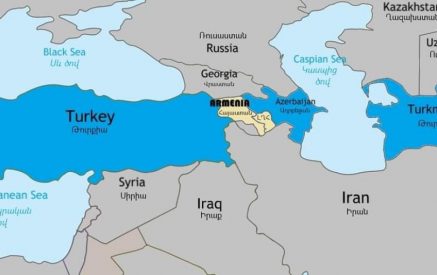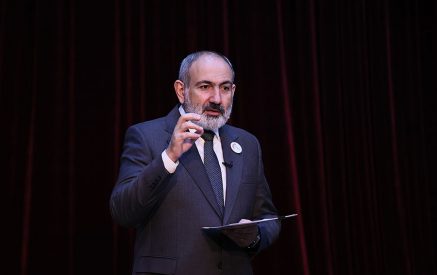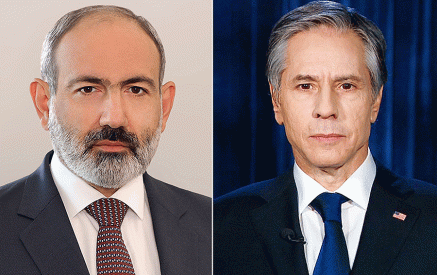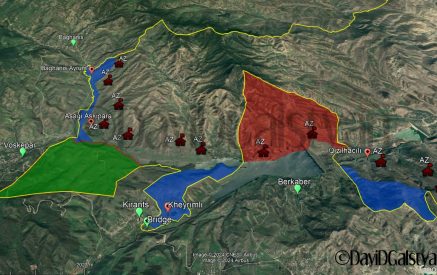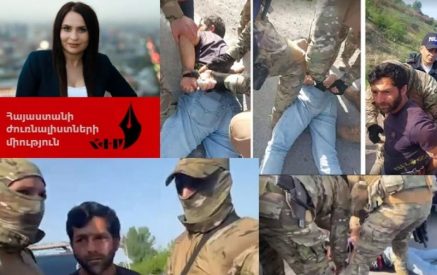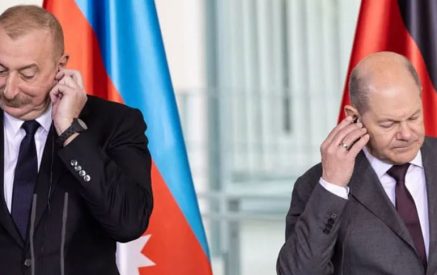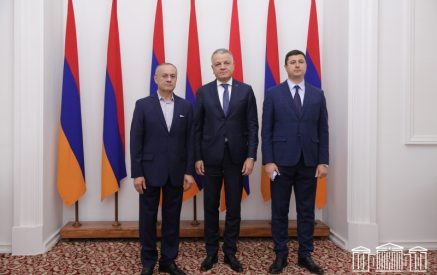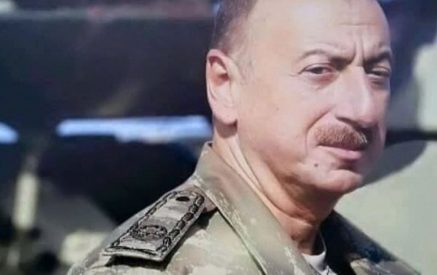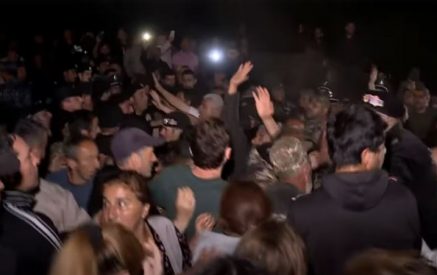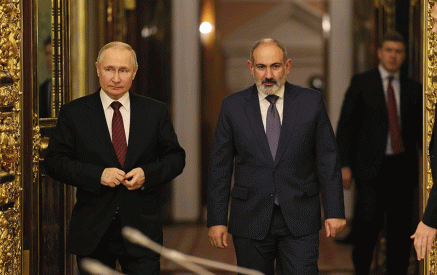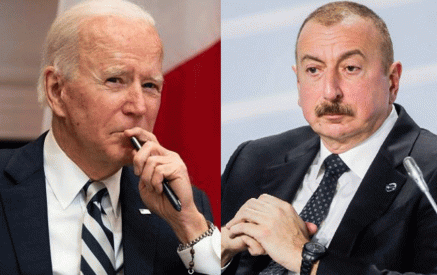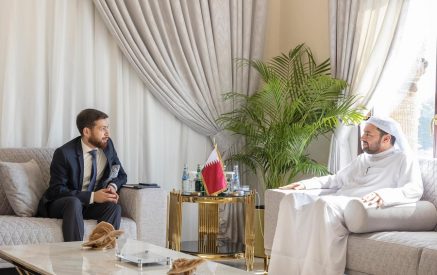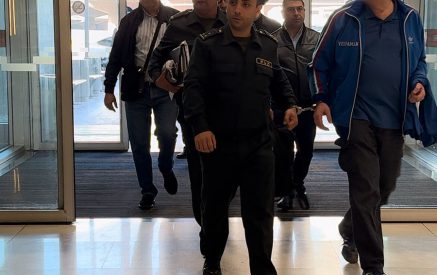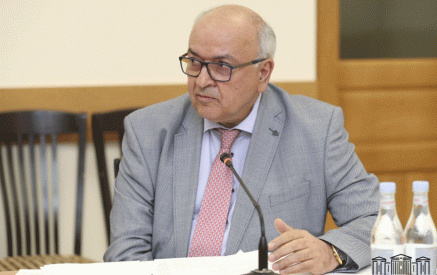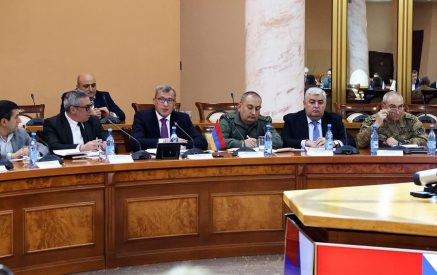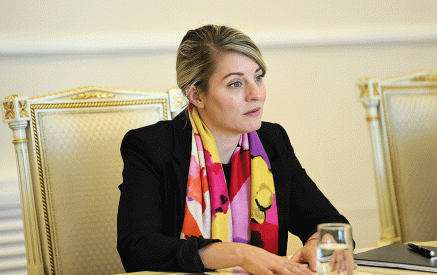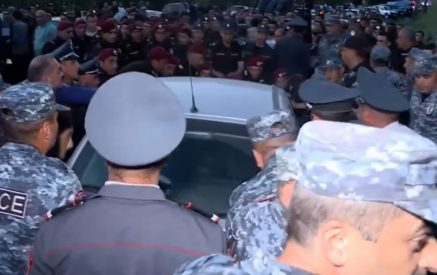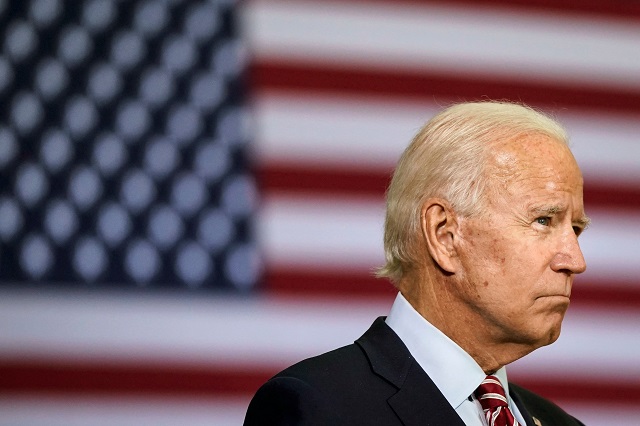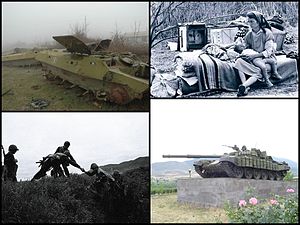
The population of Nagorno Karabakh Autonomous Oblast (NKAO), which at that moment was in the composition of Soviet Azerbaijan, started a petition campaign in support of the idea of reunification of NKAO with Armenia and applied to the leadership of the Soviet Union with a request to correct the tragic mistake of founders of the Soviet Union in the national issue.
Gradually the movement for historical justice in Nagorno Karabakh became the first mass demonstration in the whole history of the Soviet Union. The Soviet authorities were overtaken by mass protests of a whole people for restoration of its rights. The Soviet leadership, with propaganda having a dominant role in its work style, was insistently silent and was closing eyes on events taking place in Nagorno Karabakh and Armenia. The Soviet public had no idea that a separate part of the Soviet Union is storming and a whole people is holding mass protests.
The population, which was initially tolerant to the Soviet system, was changing its attitude towards bases of the Soviet power due to control over not letting spread of information about events in Nagorno Karabakh.
People in Nagorno Karabakh and Armenia started to realize the real essence of the totalitarian regime. Loss of trust in the regime and search of ways of opposing this regime started, and this was extremely dangerous in the context of physical security of the whole Armenian people. Meanwhile, after the Western mass media started to extensively comment on the events in Nagorno Karabakh, the Soviet propaganda already had to begin covering mass protests of the whole people against the national policy of the Soviet Union in settlement of national issues. A total distortion of facts , taking place in Nagorno Karabakh, began. The mass media of former Soviet Union influenced the minds of middlebrows with threats coming from peaceful manifestation of people, which went on a strike. People in Nagorno Karabakh and Armenia, who listened Western radio stations and who compared reports spread by mass media of the former Soviet Union were shocked with that the truth on events in Nagorno Karabakh came from media of not their own country – the USSR, but from the far West. Total disappointment and loss of belief in the future in composition of the USSR started to seize the mentality of the whole Armenian people. As a counter-balance to Soviet propaganda apparatus Armenian regional mass media started to skillfully use the discontent of their own people in regard of the Soviet power. The Armenia propaganda ideology was aimed at keeping up the resistance spirit and opposing the Soviet regime. Western ideologists, feeling the possibility of collapse of the Soviet Union stared to actively support Armenia and Nagorno Karabakh. At the same time in their reports, extensively spread via electronic mass media, they started to openly consider possibilities of emergence of other national movements on the territory of the Soviet Union. And the very first symptoms were tangible in Baltic countries, Georgia and Moldova. At the same time, Azerbaijan’s propaganda system started to use the Karabakh events in the direction of both raising the spirit of the Azerbaijanis in regard that these events will not be crowned with success, as they are of anti-Soviet nature, and on the other hand Azerbaijan tried to tell the whole world that the Karabakh events are aimed at restoration of idea of the “Great Armenia”, which can change the world map established after the World War II. The ideological confrontation between Armenia and Azerbaijan was aggravating. The Soviet Union felt a threat to its stability and, in order not to let expansion of national movements happen, used the propaganda system in order to intimidate the Soviet people. Mass media created image of the enemy of the Soviet Union, and of the process of perestroika and this turned out to be the Karabakh people. Moreover the key mass media of the Soviet Union infused idea of possible bloodshed between Armenians and Azerbaijani. At that time no one could imagine that peaceful manifestations can be transformed into bloodshed by special services of the USSR and its propaganda system, which used the capacities of the mass media in order to justify its future actions. The further development of events, mass killings of Armenians in Azerbaijan, planned by the KGB and ethnic cleansings, which began in Azerbaijan, Armenia and Nagorno Karabakh, lay the basis for collapse of the former Soviet Union and together with it laid the basis of the future armed and the most tragic conflict in the former Soviet Union. At present, when many years after the armed conflict over Nagorno Karabakh passed, it becomes apparent that the communications sphere like mass media was the most active participant of armed conflicts. Fascist ideologists perfectly realized the role of mass media in success of military operations, and at large they ascribed major significance to those. The success of fascism in the beginning of the World War II was at large determined by propaganda system of Wehrmacht. And Mussolini, according to his team-mates, paid greater attention rather to newspaper headlines then to military purposefulness.
The turning point in information-military sphere refers to the times of Vietnam war. American militaries asserted numerously that the reason of their defeat in the Vietnam war was not so much the support of the Soviet Union to the Vietnamese, as negative position of “its own” press. Especially after the Vietnam war the USA and other countries recognized the necessity of existence of “information-psychological support to hostilities”, and also for achieving successes in any conflict situation. Specifically in the case of Nagorno Karabakh conflict after the collapse of the Soviet Union and a parade of independence declarations on the part of former Soviet republics and autonomous regions, a conflict military situation emerged between Azerbaijan and Nagorno Karabakh, which did not wish to be in Azerbaijan’s composition. The necessity of shaping public opinion of their countries via mass media – in a way that any hostilities enjoy support among their own people and cause likings of majority of foreign countries – became a priority or authorities of Azerbaijan, which began an aggression against the self-declared Republic of Nagorno Karabakh, Nagorno Karabakh and Armenia, which supported its brother during hostilities. Methods used by the conflict sides during the armed conflict practically did not differ from contemporary techniques in the context of public relations. This was expressed in establishment of quantitative and qualitative advantage of own points of view in national and foreign mass media introduction of technologies of steady associations, behavior schemes, myths, which correspond to interests of conflict sides, which are sources of information.
Diaspora capacities were used extensively as propaganda tool in Nagorno Karabakh conflict ( the Armenian side was more successful in this, and used a well-established lobbying network), and the Azerbaijani side started to skillfully use communication and energy capacities of its country with propaganda aims and to openly blackmail the global community for putting pressure upon the Armenian side.
Taking into account Azerbaijan’s advantage both in the number of population and resources, they came to a conclusion in Nagorno Karabakh that it is necessary to establish an ideological system, which would be responsible for the combat spirit of the Karabakh people, and which would spread information about events in Nagorno Karabakh. A department of information and public relations was set up under the Nagorno Karabakh government. Nagorno Karabakh which fought not only against the Azerbaijani enemy, which tried to destroy it, but also against indifferent international community ,which watched the great tragedy of the Karabakh people and was not trying to stop it, and realized that corresponding information preparation. They realized in Karabakh that the war with Azerbaijan is depleting domestic resources and the people cannot hold the offensive for long. In order to raise the spirit of the people the authorities of Nagorno Karabakh and Armenia acted according to their beliefs, that the war against Azerbaijan’s aggression is just, Azerbaijanis are cruel and own soldiers are heroes. Besides the sides of the conflict – both the Azerbaijani and the Armenian used two directions in information campaigns to advocate their interests: providing rapid information to domestic mass media in necessary clues and at the same time severe struggle against leak of negative information and serious pressure upon those who spread it. In the period of hostilities electronic mass media practically did not operate in Nagorno Karabakh as Azerbaijan destroyed significant part of infrastructures of Nagorno Karabah’s electronic mass media during the war.
Azerbaijan perfectly understood the role of television in raising the combat spirit of Karabakh people and it is not accidental that the complex of Nagorno Karabakh’s national TV was destroyed one of the first ones during bombardments of Nagorno Karabakh’s capital. Print mass media, leaflets, ideological subunits of the Defence Army of the Nagorno Karabakh Republic also played a big role during the war; as well as special agitators, which infused ideology of just war for own freedom and quick victory over Azerbaijan among people. Such policy yielded its results and a ceasefire agreement was signed between Azerbaijan, Armenia and Nagorno Karabakh already on 12 May 1994; it set the beginning of restoration of economies of Azerbaijan and Nagorno Karabakh, destroyed during the hostilities and boosting of the negotiation process.
With collapse of the Soviet Union and self-declaration of independent states on the territory of former Soviet Union, the results of which were taken advantage equally by both Azerbaijan and then the Nagorno Karabakh Autonomous Oblast in compliance to the law, a new ideological war started between Azerbaijan on one hand and Nagorno Karabakh and Armenia on the other hand. The sides of the conflict struggled over two principles of international law: the right of states for their territorial integrity (the Republic of Azerbaijan held to this principle) and the right of peoples for self-determination (the self-declared Nagorno Karabakh Republic struggled for this right). Each of the sides tried to carry their points through mass media, through lobbyist entities and international organizations. The Republic of Azerbaijan launched the bloodiest war in the former Soviet Union under the pretence of restoring its territorial integrity. This war took away over 35 thousand human lives on both sides, and over 50,000 people were severely injured. The war caused devaluation of human values and established atmosphere of dehumanization of peoples involved in the conflict.
The propaganda system of conflict sides had a considerable role in that.
Killing and bombing civilians of Nagorno Karabakh was a cause of defied national pride for Azerbaijanis, and killings of Azerbaijani civilians – a cause of triumph of historical justice for Armenians. Electronic and print mass media gleamed with headlines about inhumane achievements of this or that side of the conflict in regard of its opponent during the 1991-1994 war.. After cease fire agreement between the conflict sides many organizations started to work in the field of conflict resolution and started to help populations of the conflict sides to realize the harmfulness of war and to initiate mutual forgiveness and reconciliation.
In 1992 the OSCE set up a special entity, called the OSCE Minsk Group, which has the mission of helping the conflict sides to reach a mutually acceptable settlement of the Karabakh conflict via mediation of countries of the Minsk Group (those are 11 countries). One of distinctive traits of this entity is that it periodically using mass media capacities tries to put pressure upon population of the conflict sides of the Nagorno Karabakh conflict to accept this or that proposal of the mediators. The most frequently voiced information on behalf of the mediators is that the sides of the conflict as if have coordinated all fundamental principles of an agreement of the conflict’s settlement and very soon Armenia and Azerbaijan will sign an agreement on principles of settlement of the Nagorno Karabakh conflict. At the same time, mass media, when disseminating statements of the co-chair of the OSCE Minsk Group, provokes the population of the conflict sides to react to these statements and in this was reactions of the societies to this or that conflict settlement proposal of the mediators are being assessed. Also analytical works and other publications of quite authority entities and non-governmental organizations are used for this purpose, and options and scenarios of possible developments connected with settlement of the conflict are introduced to the sides of the conflict through them. This fits quite well into definition of the nature of propaganda introduced by Gart Joette from Houston University and Victoria O’Donnel from North Texas university in the article “Propaganda and Infusion”. They believe that: “Propaganda is form of communication, which differs from infusion by that it strives to achieve reactions, which contribute to implementation of aims by a propagandist itself.. Propaganda is purposeful and systematic striving to shape perceptions, manipulate knowledge and guide behavior for achieving reaction, which contributes to implementation of a goal by a propagandist”. The sides of the Nagorno Karabakh conflict were guided by these definitions, and as the conflict is still far from being settled, propaganda remains to be one of the major priorities for all participants of the Karabakh conflict.
By Ruzanna Sargsyan, head of Youth division of Nagorno-Karabakh Committee of “Helsinki Initiative-92”


